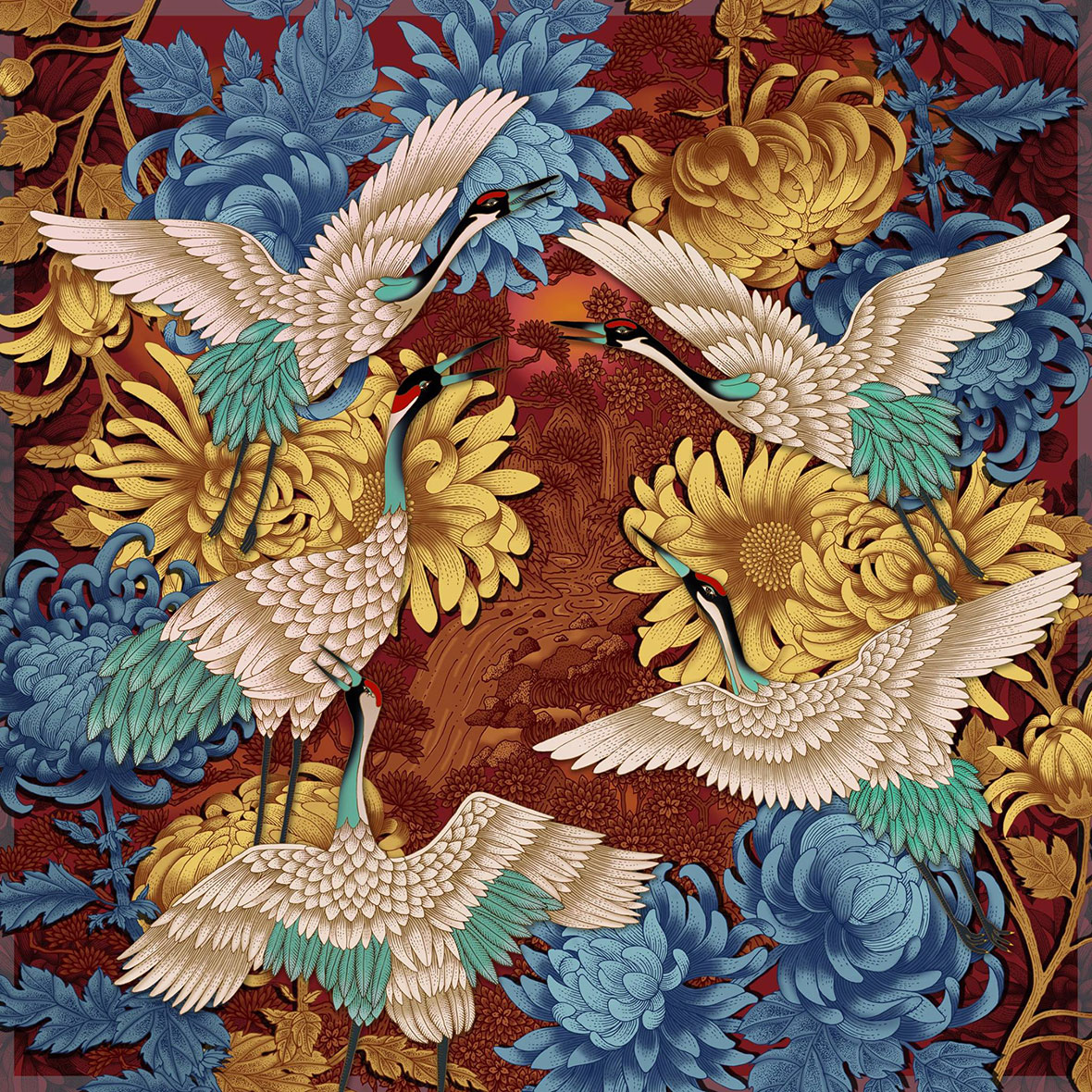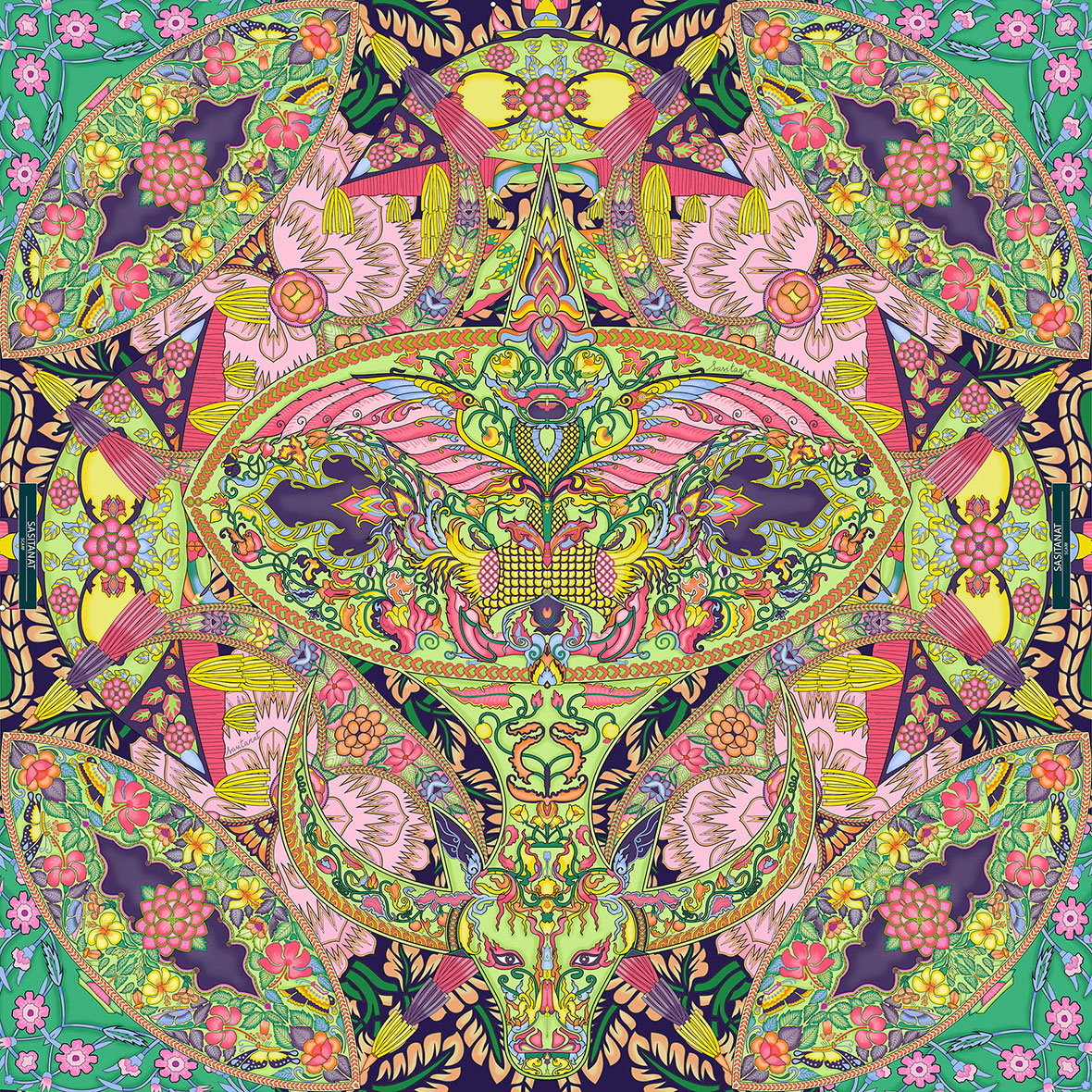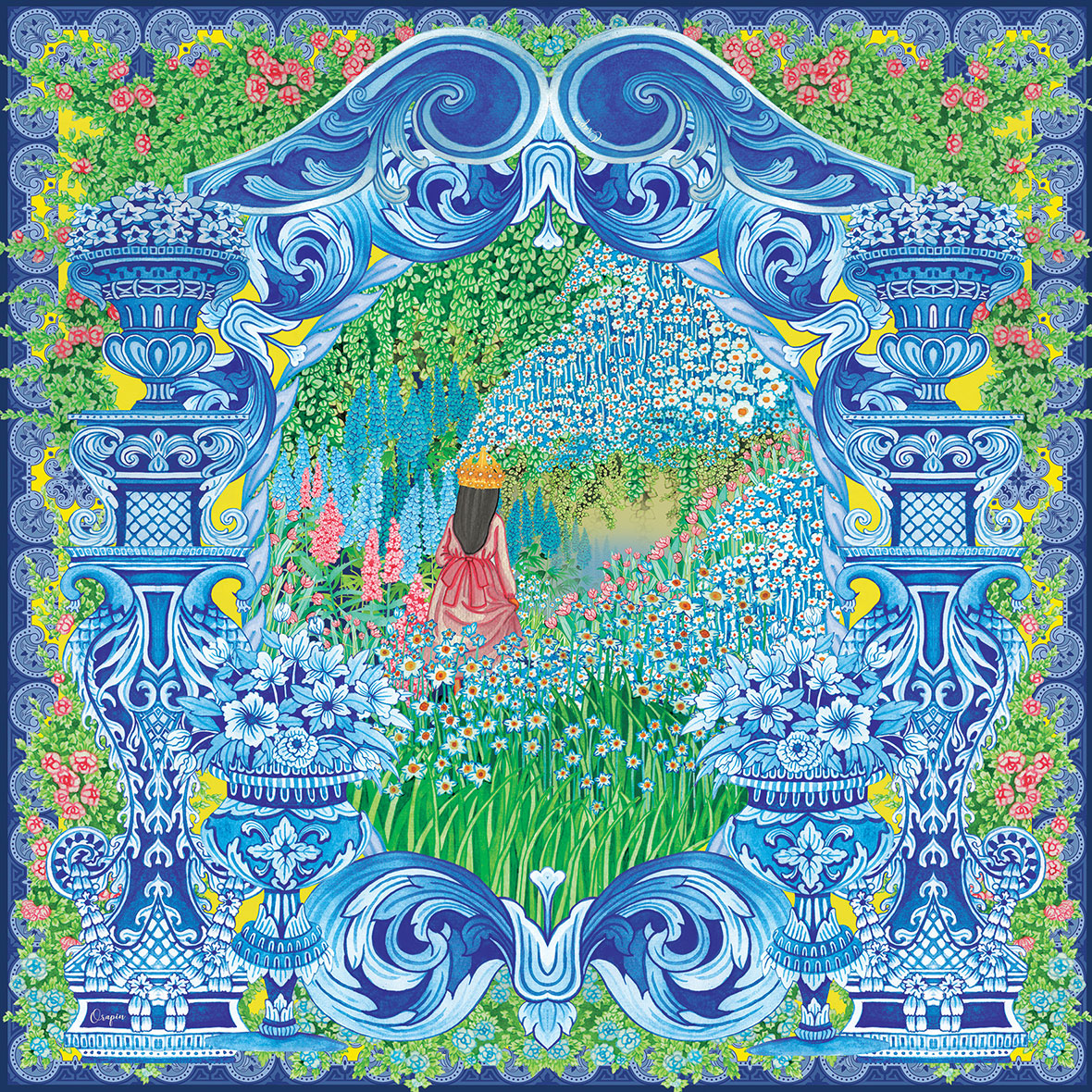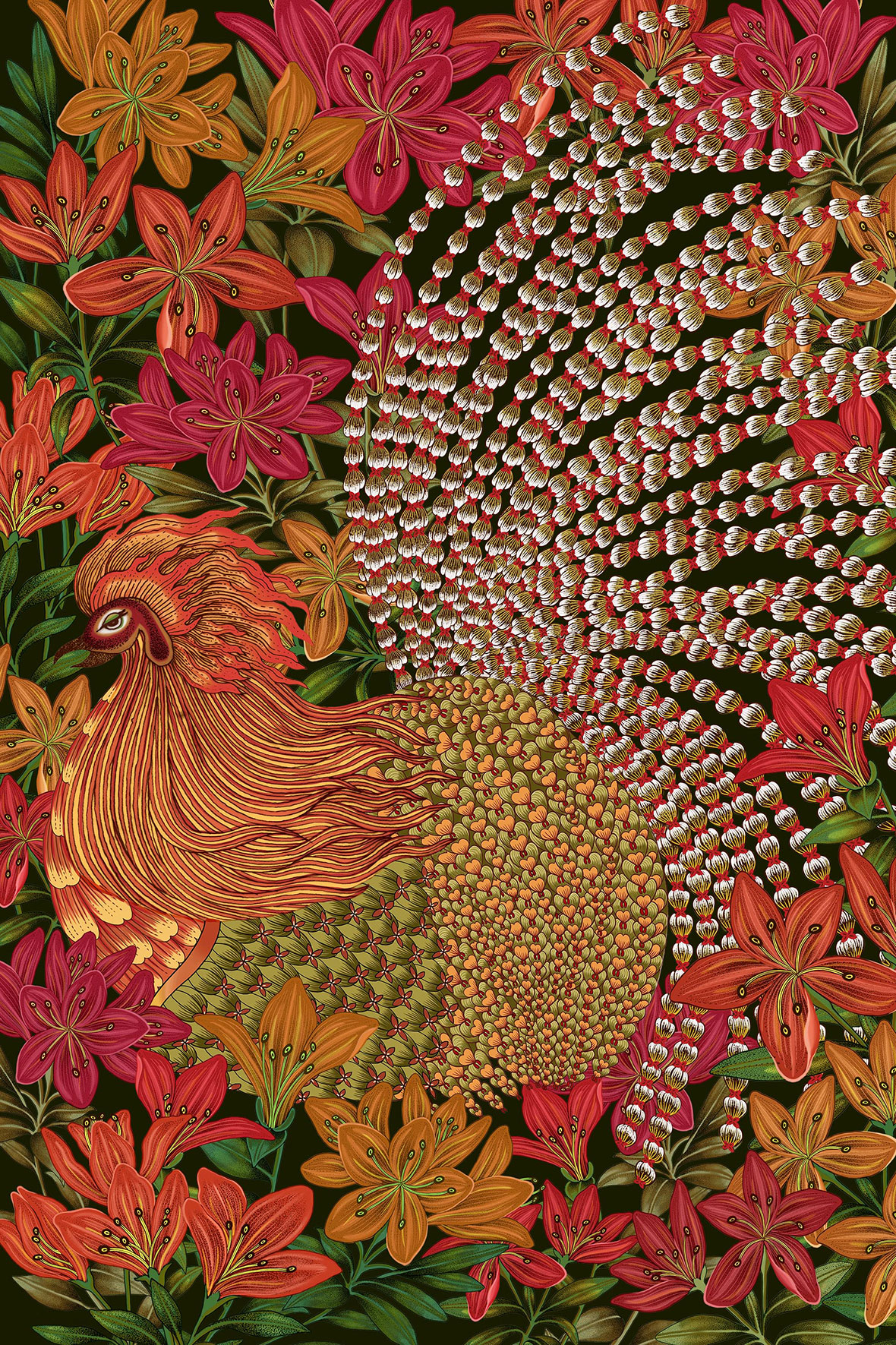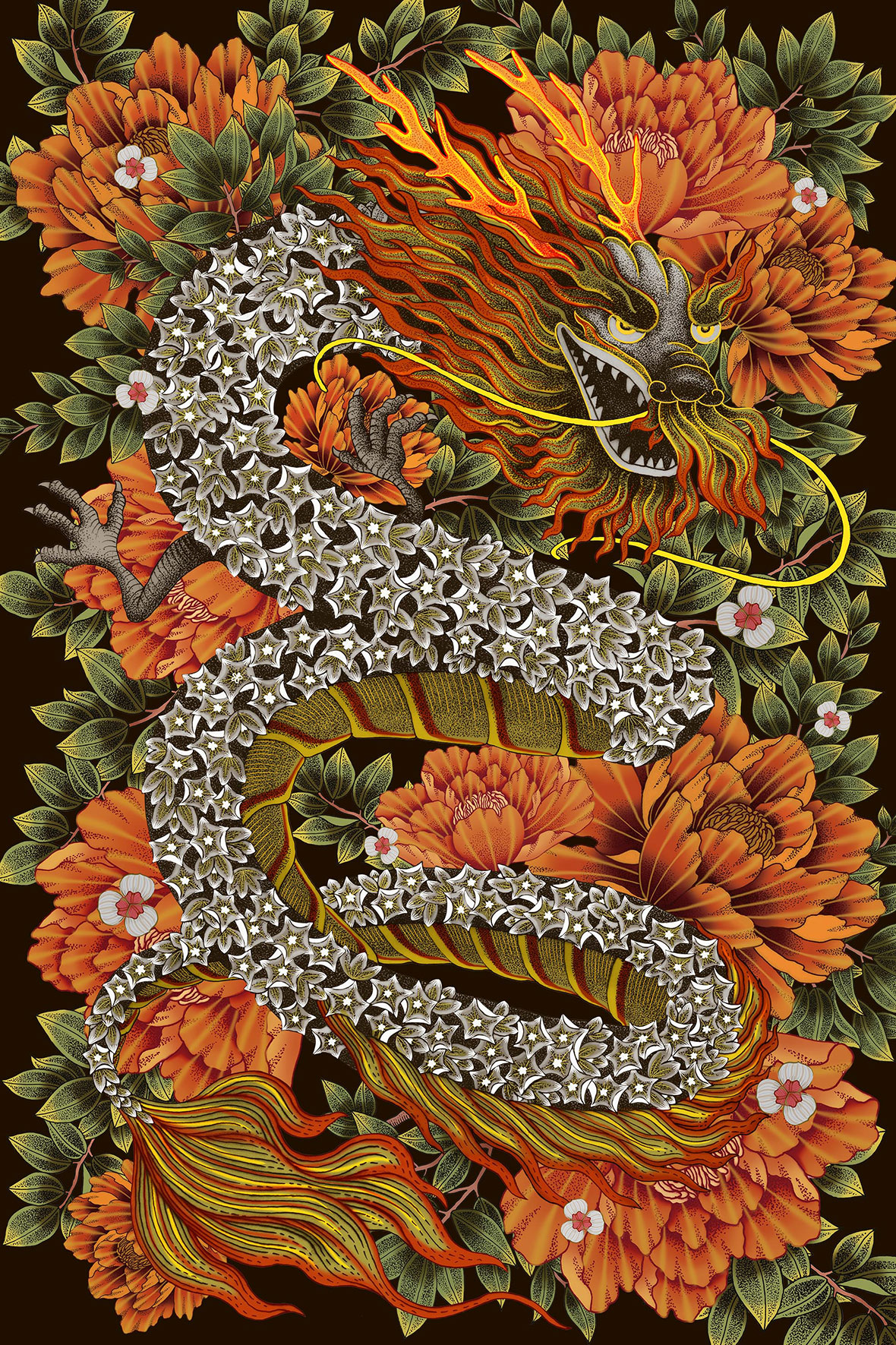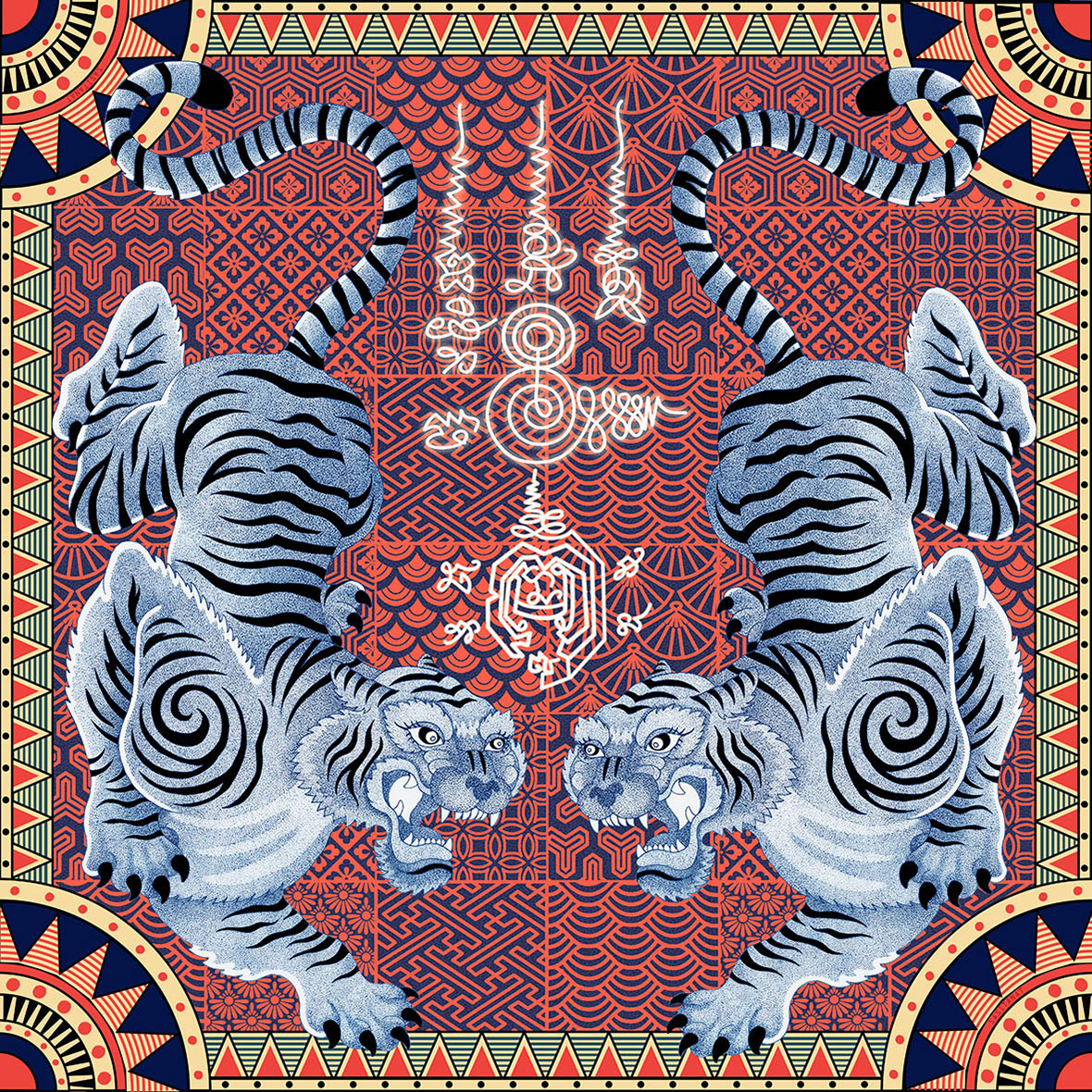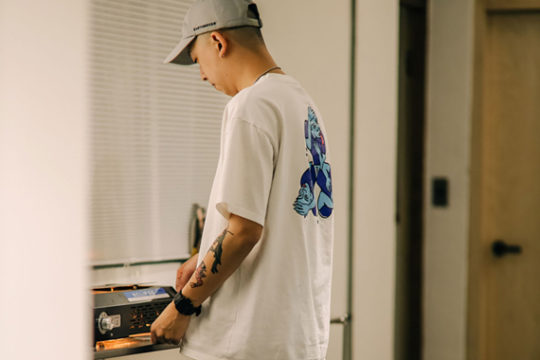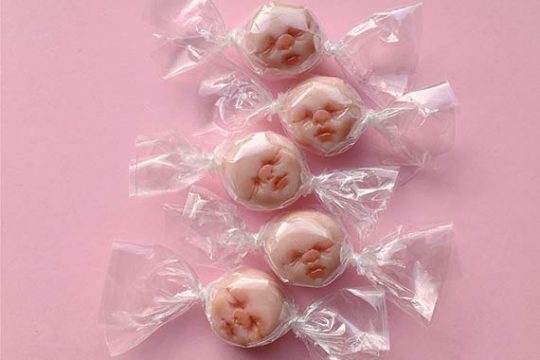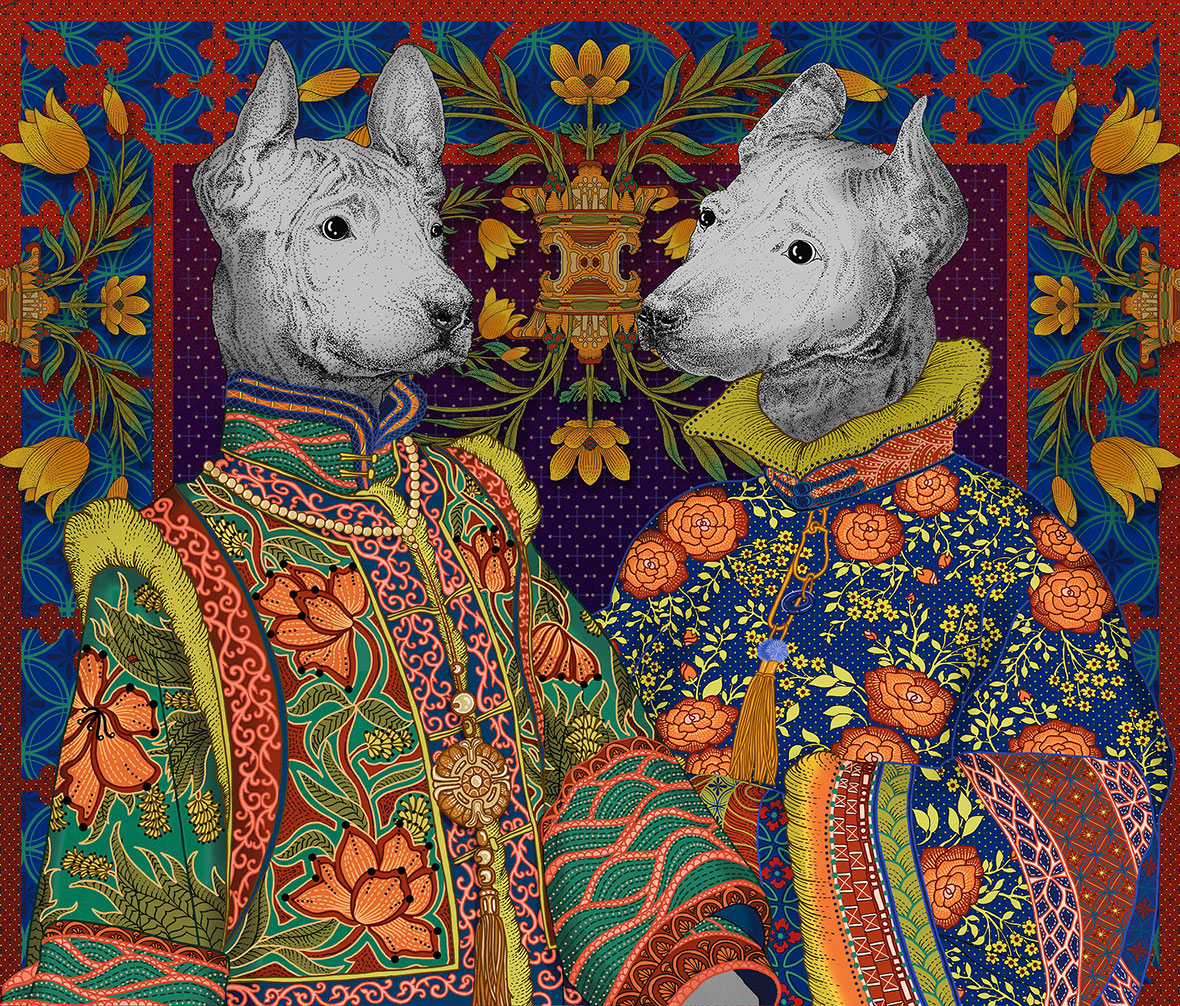
Two elegant dogs sit upright, chatting at a table dressed in regal clothing and accessories. They’re surrounded by ornate decor and an air of privilege. But despite all their apparent wealth and sophistication, the pair are simply gossiping with each other. This strange scene comes from the mind of Pavisa Meersrenon, a Thai-Chinese artist from Bangkok.
两只身姿优雅的狗狗穿着华丽服饰,端庄地对坐闲谈,派头不小。然而,虽看上去雍容华贵,却也只是一本正经地在聊八卦罢了。这个奇怪的场景,是来自曼谷的泰籍华裔艺术家 Pavisa Meersrenon 的手笔。
“There’s a Confucian philosophy that says not to care about people who judge you, because they can’t know you,” explains Meersrenon. “So when people gossip, I view it as just the noise of dogs barking. “The people who have very high stature and are educated think they’re the best but they’re still just gossipers. You’re privileged and cool and never do anything wrong? Right.”
“儒家哲学认为,人不知而不愠,意思是不要在意那些评判你的人,因为他们并不了解你,”Pavisa 解释说,“所以对于别人的闲言闲语,我只当作是狗在乱叫。从我的经验来看,那些社会地位高、受过高等教育的人虽然自视甚高,但他们也一样喜欢八卦。他们享受特权,看上去很酷,好像他们从来不会犯错?拉倒吧!”
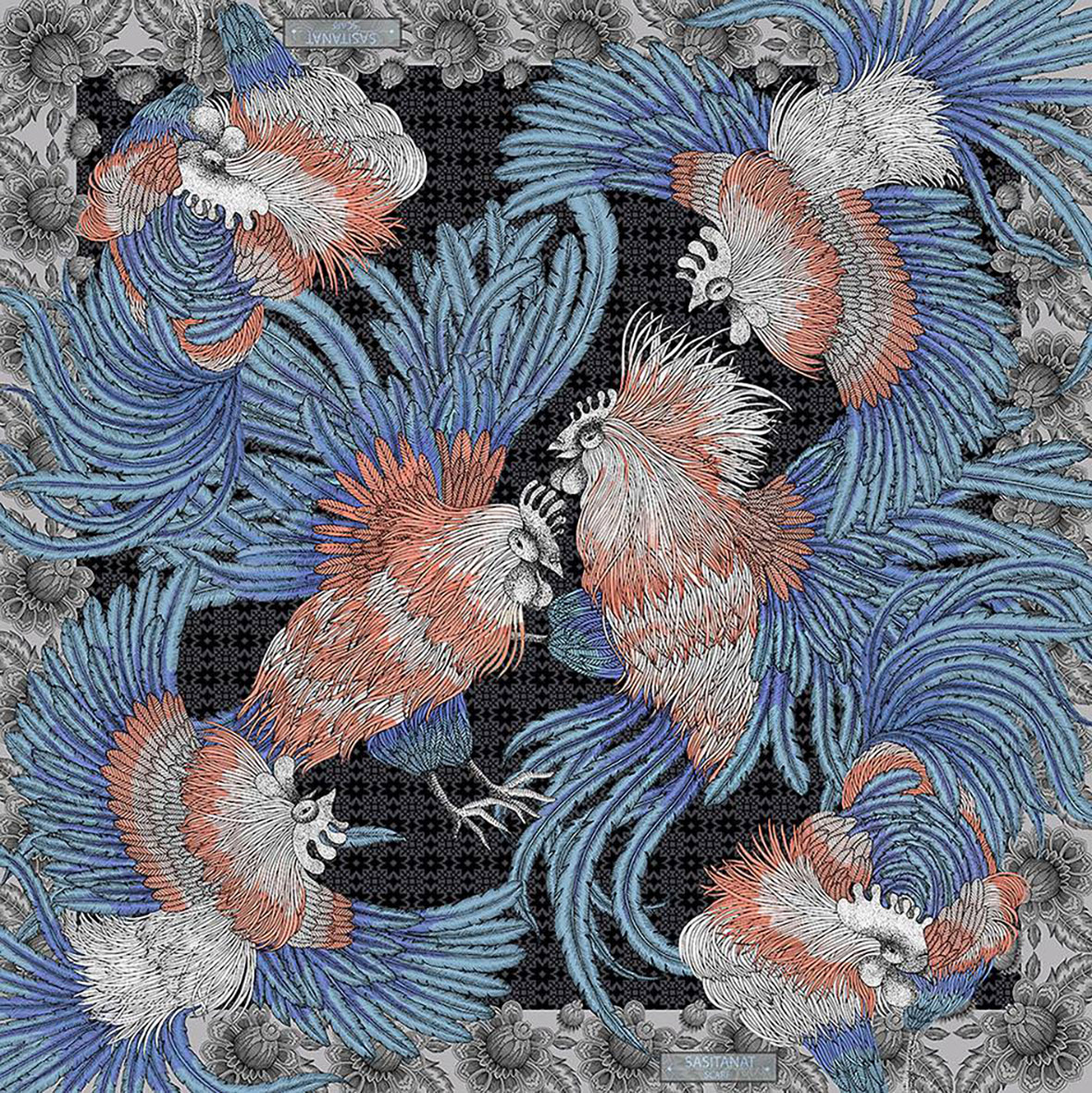
Meesrenon got her start through a major in communications, which makes her comfortable with mediums like print. The dog artwork is a large mixed-media piece blending several layers of gloss, matte, and metallic print with dot drawing, acrylic painting, and embroidery. “People think that art is just paint on a canvas, but no. Painting alone can be boring,” she says. Her earliest paid creative work was helping a local business with fabric prints, something she continues to do this day. Some of her more recent, prominent pieces are print designs on scarfs that she displays on her studio walls like canvases.
Pavisa 曾攻读传播学专业,所以对印刷等传播媒介比较熟悉。而这幅“两只狗”的作品,属于她的大型混合媒介作品,融合了具有光泽感、哑光感、和金属感的印花、点状绘画、丙烯画、刺绣等媒介,共构出丰富的层次。她说:“有人说艺术就是绘画,那未免也太过单调。”她最早的有偿创作是帮助当地一家公司进行织物印花,并一直做到现在。而她近期的一些比较突出的作品主要是围巾印花设计,她把这些作品用画框框住,在工作室墙壁上进行展示。
She currently does consultant work that allows plenty of travel around the country, were she’s learned about traditional and indigenous styles from across the region. She made one scarf using a pattern from a Southern Thai buramus kite. Another reimagines bai sri sukhwan vases used in a Northeastern Isan ceremony for village members who’ve lost their way. “Hopefully the pattern makes people feel OK, like their soul is still with them or calling it come back,” she adds. She’s also incorporated phan phum vases in her work, which are used in offerings for luck, and the eagle design commonly found on kolae boats in the south.
Meesrenon’s inspirations are mixed with her own creative flourishes or reinterpreted through dreams she’s had. “I like to read about culture and history a lot, so maybe when I fall asleep this stuff is just swimming around in my head and comes out like this,” she laughs.
由于目前从事咨询师方面工作,游走于全国各地成了家常便饭,也因此让 Pavisa 了解到泰国各地的传统和原始风格。她以泰国南部的 buramus 风筝图案以及东北部依善地区的 Bai Sri Su Khwan 花瓶设计(专为迷途之人设计)为灵感,分别制作了一款围巾。“希望这些图案的设计能为迷失的人或灵魂带来慰藉,”她补充道。除此之外,她还在作品中加入了用于祈福 phan phum 花盘元素,以及泰国南部传统科莱船(kolae boat,是泰国南部南部省份和马来西亚半岛东海岸使用的传统渔船)上常见的老鹰图案。
Pavisa 喜欢将各种灵感与自己的创意相结合,或是对梦中的场景进行重新描绘。“我很喜欢阅读文化和历史方面的书籍,也许是这个原因,当我入睡后,这些东西就会萦绕于我的脑海中,然后在作品中流露出来,”她笑着说。
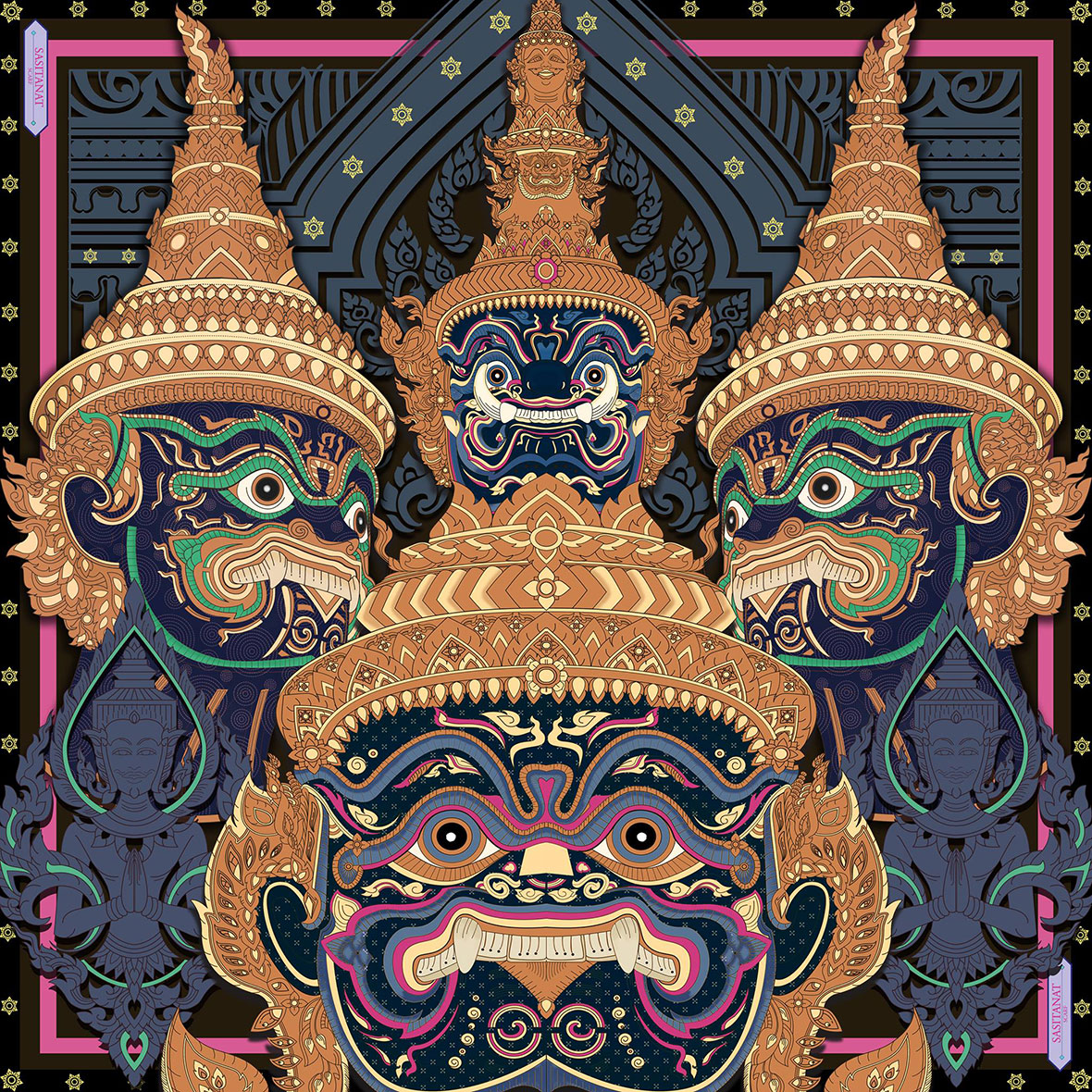
Spiritual traditions are also rife in her art, and this is attributed to frequent temple visits with her grandma. These references include a recreation of the jungle called Himmaphan from folk tales, which is filled with strange animals mixed with humans. (Traditional Thai painting has roots in temple murals that were largely used to explain the story and lessons of Buddha or to illustrate Thai literature.) Another example is a piece featuring flowers from the sal tree embroidered onto a canvas with gold leaf—the mediums are a reference to carpets that locals pray on, which are often covered with flakes from the gold leaf offerings fallen off the Buddha. The tree is often found in temples because it’s a symbol of Buddha, who was born and died under a sal tree.
从小到大,Pavisa 常与奶奶一起参拜寺庙,这也让她的作品充满神灵色彩。她在一幅作品中重新描绘了传说里西马汗(Himmaphan)丛林的场景,丛林中生活着各种与人类杂交的神奇物种,(传统的泰国绘画起源于寺庙壁画,这些壁画主要用于阐释佛教典故和哲理,或描绘泰国文学中发生的故事)。另外,她还在另一幅作品中用金箔将娑罗树上的花朵绣在画布——这些媒介的灵感来自当地人跪拜神灵时用到的地毯,地毯上经常覆着从佛像金箔上掉下的碎片。娑罗树是寺庙里常见的一种树木,传说佛陀正是在一棵娑罗树下往复,因此这种树木被视作为佛陀的象征。
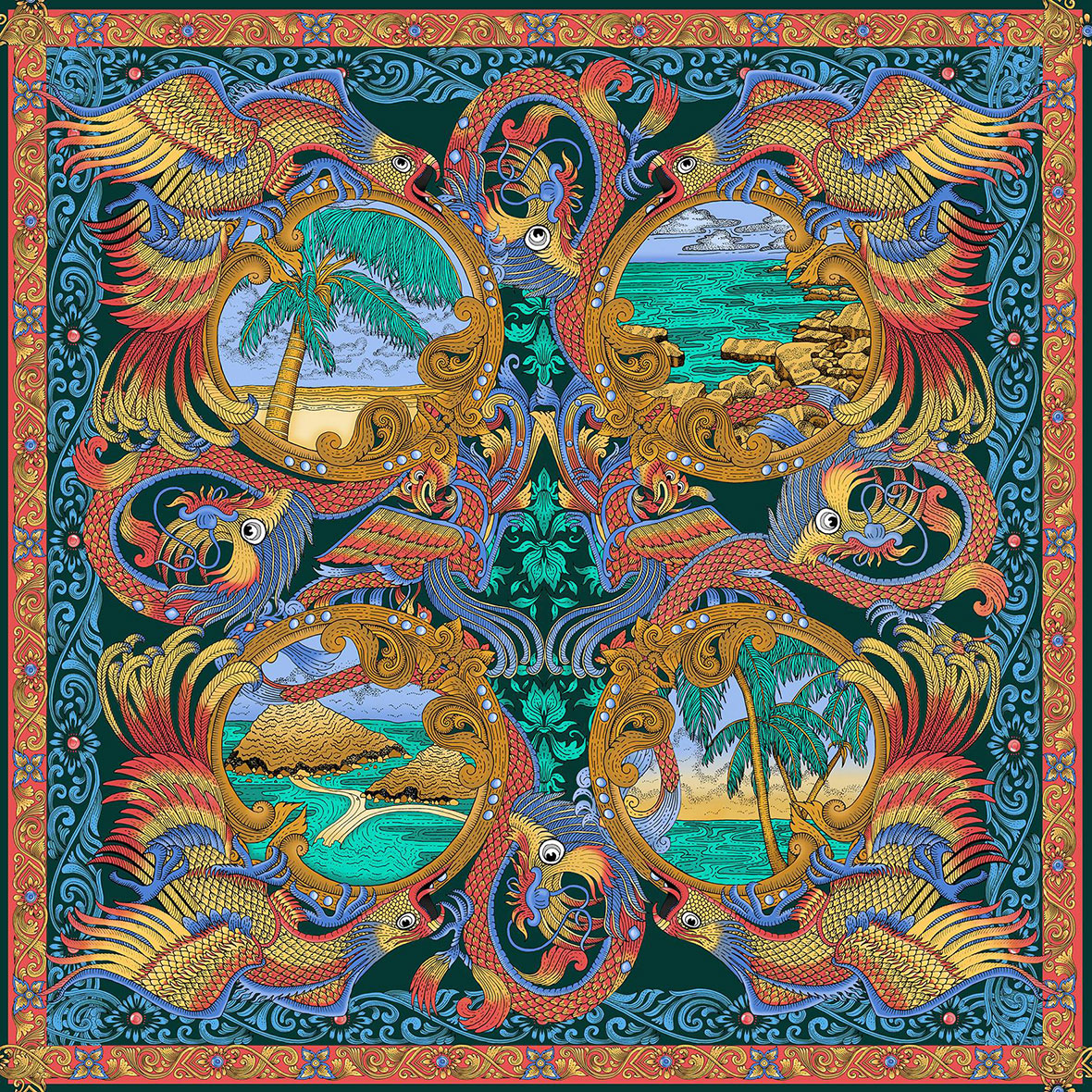
“One day we were at a temple, and I noticed how flower petals and leaves were falling,” she recalls. “My grandma said that’s what life is like. It reminded me that I can’t keep her forever.” Meesrenon’s grandmother, who was in a recliner on the first floor of her studio watching television during our interview, is a frequent inspiration. Her upcoming solo show, her first despite three years of the gallery’s attempts, is scheduled for early next year and is partially named The Collector after her grandma. “It’s about collecting feelings, collecting culture,” she says. “It’s also about collecting my grandma, the feeling of love she gives me.”
“奶奶跟我说,人出生入死是常态。她不能永远留在我身边,” Pavisa 说道。采访期间,奶奶一直在工作室一楼的躺椅上看电视。很多时候,奶奶就是她的创作灵感。经过三年努力,Pavisa 即将举办个展。展览定于明年年初,定名为《收藏家》(The Collector),“这次展览可以算是一次关于情感和文化的个人收藏,”她说,“同时,收藏着奶奶给我的爱和关怀。”
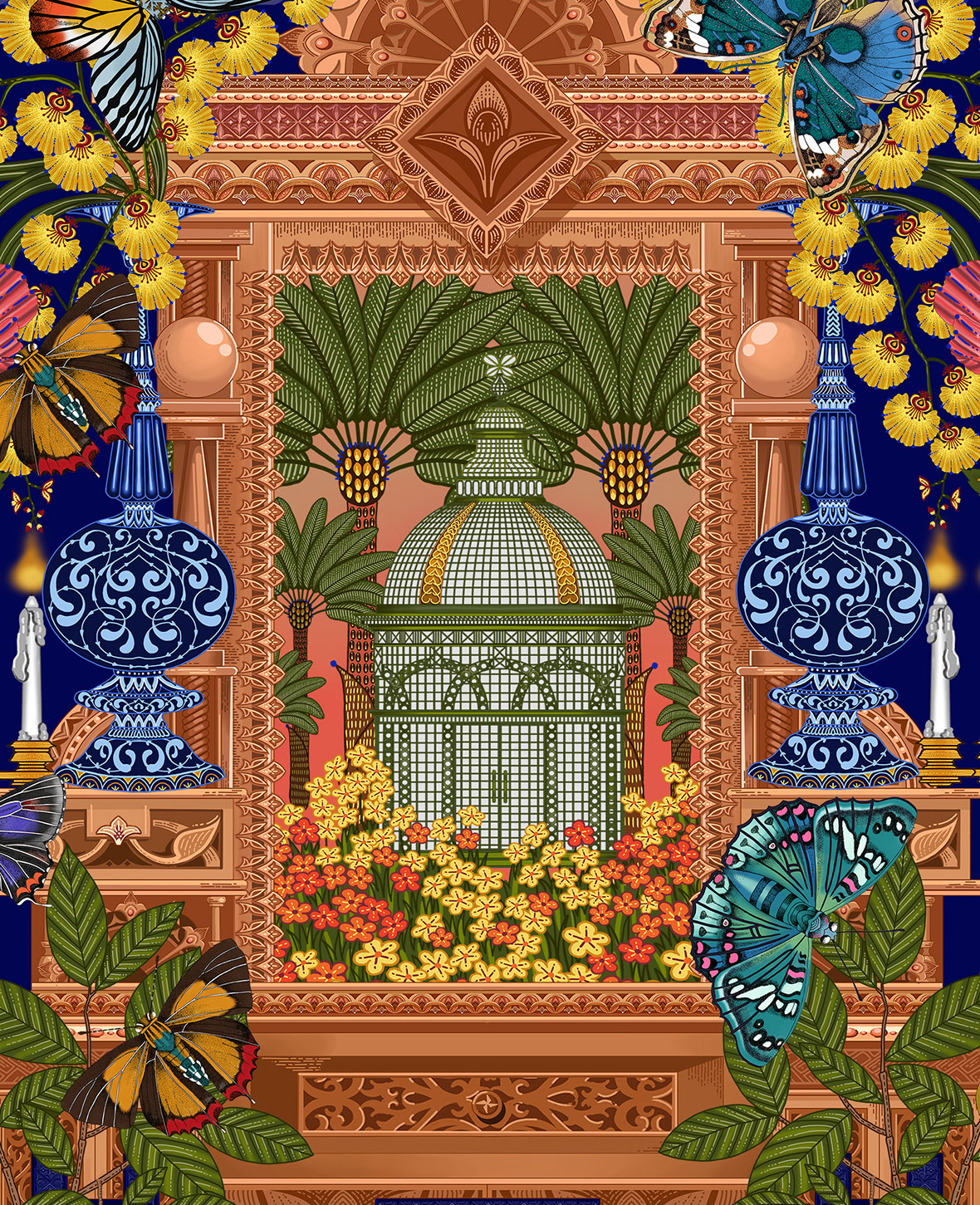
The work referencing her family is Meesrenon’s work at its most personal, but all the different cultural and religious references across her work connects with her own experiences. The temples are shared moments with a loved one, the local and indigenous motifs are pulled from her travel and work, and the philosophical ideas shape her outlook on life. It connects her to the world around her, and it’s all filtered through her own views and ideas.
Pavisa 的大多数作品都极富个人情感色彩,她在作品中所融入的不同文化和宗教元素都与她个人的经历有关。寺庙是她与亲人的共同记忆,本地化和土著特色的图案来源于她的旅行和工作,而其中的哲学理念则坦述着她的人生观。这一切将她与周围的世界联系起来,又透过她的观点和想法诠释出来。
Like our stories? Follow us on Facebook and Instagram.
Instagram: @pabaja
Contributor: Mike Steyels
Chinese Translation: Olivia Li

